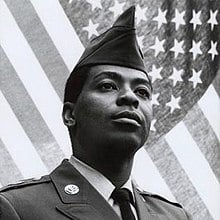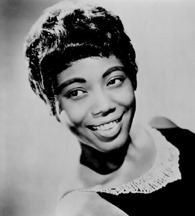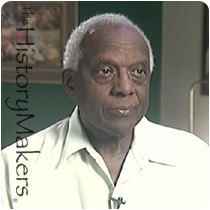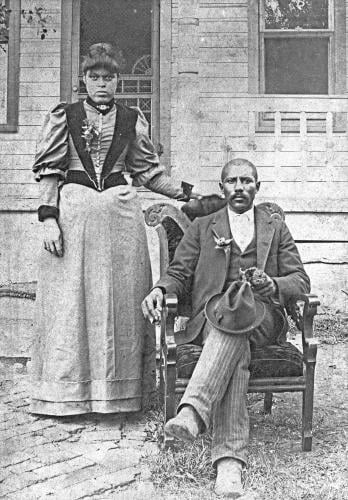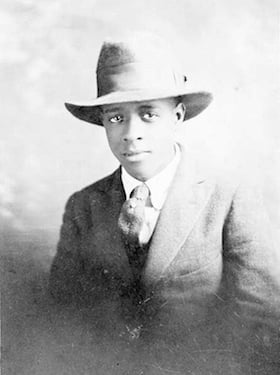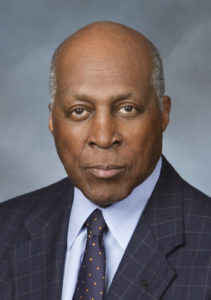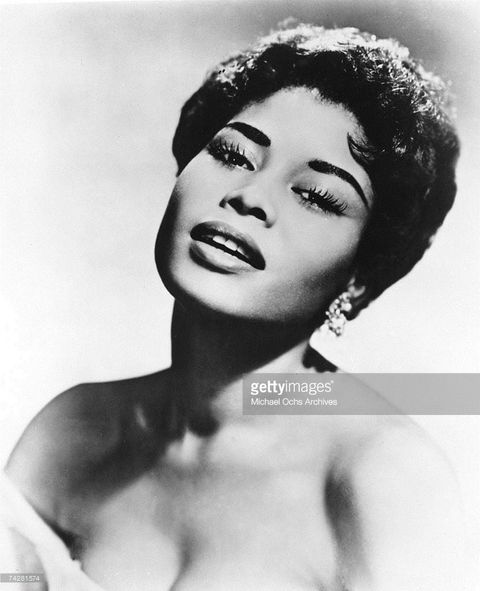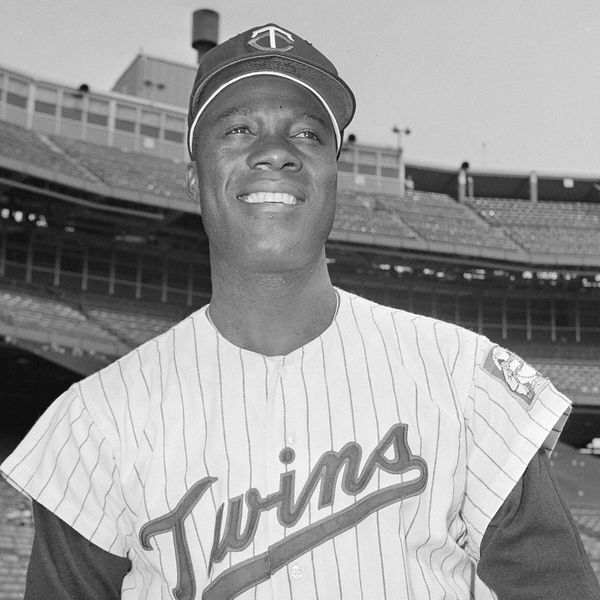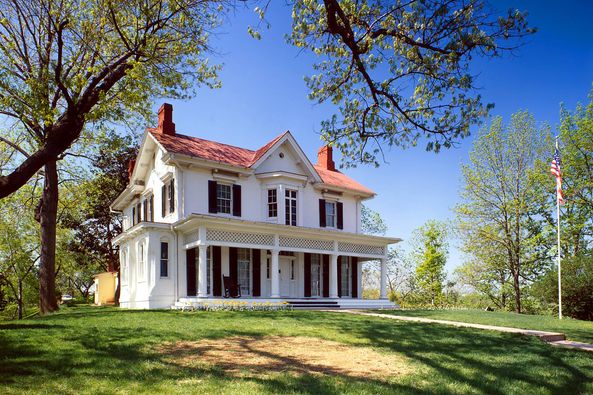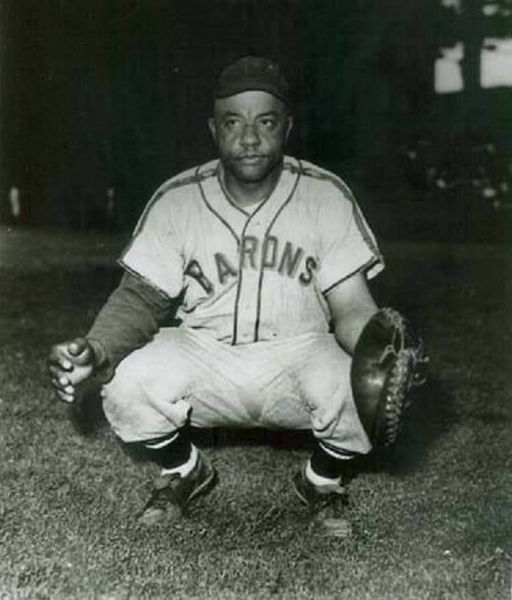GM – FBF – Today’s American Champion was an African-American gay man, one of the first service members to challenge the ban against homosexuals in the United States military.Today in our History – August 20, 1948 – Perry Watkins (August 20, 1948 – March 17, 1996) was born.Perry James Henry Watkins was the only openly gay person discharged from the U.S. Army with full honors after serving almost two decades. He had to fight for this distinction, suing the Army after being forced out because of his sexual orientation. The case went all the way to the Supreme Court.Ola Watkins gave birth to Perry on August 20, 1948, in Joplin, Missouri. Perry’s parents divorced when he was only three. When in junior high, his mother remarried a career military man, and they moved to Tacoma, Washington. Throughout high school in Tacoma, Perry took dance classes, even studying at the Tacoma City Ballet. He later earned a BA in business and theater.Watkins’ mother influenced him strongly. First, she accepted her son’s sexual orientation. Her emphasis on honesty played a key role in his embracing that orientation throughout his Army career. Watkins knew growing up that he was gay. If peers asked him, he answered truthfully. He considered the racism directed against him far more prominent than the homophobia.In 1967, during the Vietnam War, Watkins received his draft summons. He marked “yes” on his inductee questionnaire when asked about “homosexual tendencies.” The Army responded by sending him to a psychiatrist who interrogated Watkins about his sexuality but also asked if Watkins had a problem serving his country. Watkins answered, “No problem.” Consequently, his military career as an openly gay man began in May 1968. Several times in those early years he tried to leave the military due to his sexual orientation after hearing that the Army dismissed several white gay peers for that reason. The military, however, denied Watkins’ requests. He surmised that the primary reason for this differential treatment was his race.Watkins’ first two years in the Army came to a close in 1970. When realizing that he needed financial assistance for college, he reenlisted. Again, he honestly answered the homosexuality question and again, the Army accepted him. Watkins served twice in Korea in the early 1970s. During this period, he signed up to entertain the troops using his female impersonator role, Simone, and performed in Army clubs in Germany and throughout Europe. Watkins received several commendations during his years of service.In 1975, without warning, Watkins’ commanding officer started proceedings to discharge him. A hearing was held in October of that year beginning a four year long administrative process to remove him. Watkins, however, now fought these charges. In 1979, his military-clearance renewal was rejected due to his gay status. Two years later he sued the Army, which responded by discharging him for being gay.That the Army had earlier accepted Watkins’s sexual orientation early in his career and then later removed him for it, became the center of his nine-year legal challenge, which was decided in 1990 by the U.S. Supreme Court. The Court rejected the Army’s argument and ordered him to be reinstated with back pay, retirement benefits, and retroactive promotion to Sergeant First Class. Watkins was then honorably discharged from the U.S. Army in 1990In his last years, Perry James Watkins lectured throughout the United States on his military experiences. He died from AIDS-related complications in Tacoma on March 13, 1996. Research more about this great American Champion and share it with your babies. Make it a champion day!
Month: August 2021
GM – FBF – Today’s American Champion was an American soul singer and pianist, best known for her biggest hit single, the million-selling “Shoop Shoop Song (It’s In His Kiss)”, and her duet “Let It Be Me” with Jerry Butler.
GM – FBF – Today’s American Champion was an American soul singer and pianist, best known for her biggest hit single, the million-selling “Shoop Shoop Song (It’s In His Kiss)”, and her duet “Let It Be Me” with Jerry Butler.Today in our History – August 19, 2001- Betty Everett dies.Everett was born in Greenwood, Mississippi, United States. She began playing the piano and singing gospel music in church at the age of nine. She moved to Chicago, Illinois, in 1957 to pursue a career in secular music. She recorded for various small local Chicago soul labels, before she was signed in 1963 by Calvin Carter, A&R musical director of fast-growing independent label Vee-Jay Records. An initial single failed, but her second Vee-Jay release, a bluesy version of “You’re No Good” (written by Clint Ballard Jr. and later a No. 1 hit for Linda Ronstadt), just missed the U.S. top 50. Her next single, the catchy “The Shoop Shoop Song (It’s in His Kiss)”, was her biggest solo hit. The song climbed to No. 6 on the Billboard Hot 100 and made No. 1 on the Cashbox R&B chart for three weeks.Her other hits included “I Can’t Hear You” (covered by numerous artists, including Dusty Springfield, Helen Reddy, and others), “Getting Mighty Crowded” (covered by Elvis Costello in 1980), and several duets with Jerry Butler, including “Let It Be Me”, which made the US Top 5 in 1964 and was another Cashbox R&B number 1. After Vee-Jay folded in 1966, she recorded for several other labels, including ABC, Fantasy, and Uni.After an unsuccessful year with ABC, a move to Uni brought another major success in 1969 with “There’ll Come A Time”, co-written by producer and lead singer of The Chi-Lites, Eugene Record. This rose to No. 2 in the Billboard R&B listing (No. 26 on the Hot 100) and topped the Cashbox chart. However, most of her later work would not match the success she had with Vee-Jay, although there were other R&B hits such as “It’s Been A Long Time” and “I Got To Tell Somebody”, which re-united her with Calvin Carter in 1970. The 1975 album Happy Endings had arrangements by Gene Page and includes a cover of “God Only Knows” by the Beach Boys. Her final recording came out in 1980, again produced by Carter. Her awards include the BMI Pop Award (both for 1964 and 1991) and the BMI R&B Award (for 1964).Until her death, Everett resided with her sister in South Beloit, Illinois, where she was involved in the Rhythm & Blues Foundation and the churches of the Fountain of Life and New Covenant. In 1989, a handler of Everett brought her to the attention of Worldwide TMA, a management consulting firm in Chicago. Under the direction of Steve Arvey and Scott Pollack, former Chairman of The Chicago Songwriters Association, the firm started work on reviving Everett’s singing career. Within a year she contracted with Pollack taking on all management decisions and management financing.In 1990, her signature hit, “The Shoop Shoop Song (It’s in His Kiss)”, had been used in the movie Mermaids for the end credits, and recorded by the star of the film, Cher. This reached No. 1 in the UK Singles Chart and charted well elsewhere in Europe.Everett had secured an indie label deal in the US and a new single “Don’t Cry Now” had been recorded, penned by Larry Weiss (Trumpet Records, unreleased). In connection to the preceding events, Everett was booked and aired a 20-minute appearance on the hit TV show at the time, Current Affair.She was then booked to star at the 1991 Chicago Blues Festival which aired live worldwide on over 400 PBS radio channels, marking Everett’s last live appearance on radio.Later that year, two concerts were booked for consecutive weekends in late October 1991; one at Trump’s Taj Mahal in Atlantic City, the other at the Greek Theatre in Los Angeles. All had been arranged through management and Charles McMillan, Jerry Butler’s longtime friend and personal manager. However, Everett declined to show for the engagements. Despite exposure, she was unable to resurrect her career because of health problems.She was inducted into the Rhythm and Blues Foundation’s Hall Of Fame in 1996 and, about four years later, made her last public appearance on the PBS special Doo Wop 51, along with her former singing partner, Jerry Butler.This, according to The Independent (c. August 2001), was met with raves about the brief reunion where she “brought the house down”. Butler, in his autobiography, Only The Strong Survive, compared Betty with Gladys Knight as a singer in that she seemed to do everything so effortlessly.Everett died at her home in Beloit, Wisconsin, on August 19, 2001; she was 61. On June 25, 2019, The New York Times Magazine listed Betty Everett among hundreds of artists whose material was reportedly destroyed in the 2008 Universal fire. Research more about this great American Champion and share it with your babies. Make it a champion day!
GM – FBF – Today’s American Champion was s an American architect, and professor at Morgan State University.
GM – FBF – Today’s American Champion was s an American architect, and professor at Morgan State University.Today in our History – August 18, 1932 – Leon Bridges is born.Leon Bridges is recorded as the founder of the second African American-owned firm in Seattle. He was born on August 18, 1932 in Los Angeles, California. In high school he was told by a counselor that he couldn’t become an architect because he was black, and then while a student in high school he met his mentor, famed African American architect, Paul Williams.While a student at UCLA, Bridges was drafted into the military in 1952, and was stationed in Japan. While a soldier, he continued to study architecture. He earned his bachelor’s of architecture degree from the University of Washington in 1960.Bridges began working in Seattle architecture firms while still a student at the University of Washington and received his first job in 1956 as a draftsman. Bridges worked for the architecture firm Gotteland and Kocarski and designed Catholic churches and buildings in Seattle.After becoming a registered architect in 1962, Bridges formed his own firm, Leon Bridges AIA in 1963. His first project was designing a building for the Seattle YMCA. In 1966, he formed a partnership with colleague Edward Burke and they worked together until 1972 when Bridges relocated his firm to Baltimore.He was the first registered African American architect in Maryland. He served as National Director of the American Institute of Architects (AIA) where he co-founded the AIA/Ford Minority Scholarship fund. In 1984 he was invested as a Fellow of the prestigious College of Fellows of the AIA.Bridges is the recipient of more than twenty national, regional and local awards for design excellence including the restoration of Baltimore’s Penn Station and Baltimore City College High School. Bridges is also a member of the counsel of the National Organization of Minority Architects (NOMA), for which he has served in every national office, including president.Currently, Bridges is a partner in The Obsidian Group, an architectural, design and planning firm with offices in Baltimore, New York and North Carolina. Research more about this great American Champion and share it with your babies. Make it a champion day!
GM – FBF Today’s American Champion was an American farmer and entrepreneur remembered as one of the wealthiest black Americans of the nineteenth and early twentieth centuries.
GM – FBF Today’s American Champion was an American farmer and entrepreneur remembered as one of the wealthiest black Americans of the nineteenth and early twentieth centuries.Known as the “Potato King of the World” by 1902, Groves optimized potato growth methods, out-producing anyone else in the world to that point. His vast financial success—analyzed further in Booker T. Washington’s The Negro in Business (1907)—was utilized to help combat racism by providing economic opportunities for other black Americans.Today in our History – August 17, 1925 – Junius George Groves (April 12, 1859 – August 17, 1925) died.Junius George Groves, the son of Martin and Mary Anderson Groves, was born in slavery on April 12, 1859, in Green County, Kentucky. After emancipation, he received some public schooling three months out of the year, but taught himself to read, write, and understand mathematics. As a freedman, with just 90 cents to his name, Groves ventured to Edwardsville, Kansas, during the Exodus of 1879, where he married Matilda E. Stewart a year later.The couple had 14 children, 12 of whom survived into adulthood. After working as a sharecropper, Groves began purchasing farmland in 1884; by 1905, his holdings included about 500 acres. He and Matilda grew the farm and were able to build a 22-room mansion on the property. Groves purchased and shipped produce—most famously potatoes—throughout North America. His other financial ventures included owning and operating a general goods store in Edwardsville, stock in mines in Indian Territory and New Mexico, and stock in Kansas banks; he also founded or co-founded the Negro Business League, the Pleasant Hill Baptist Church, the Kaw Valley Potato Association, and the Sunflower State Agricultural Association. Booker T. Washington, who featured Groves in his book The Negro in Business (1907), had high praise for him, describing Groves as “our most successful Negro farmer.” By 1902, Groves was considered the “Potato King of the World”. His superior methods led to the production of 721,500 bushels of the crop in a single year, out-producing anyone else in the world to that point. His worth was estimated at $80,000 in 1904 and at $300,000 in 1915; he is considered one of the most prosperous black Americans of the late nineteenth and early twentieth centuries.At the height of his success, he had constructed a 22-room mansion equipped with the latest comforts of the era. Groves utilized his wealth and influence to combat racism. During the growing season, as many as 50 laborers—both black and white—worked on his farm. He founded a black American community center in Edwardsville and a golf course for black citizens, perhaps the first of its kind in the country. Groves died of a heart attack at the age of 66. His funeral, one local newspaper reported, was the “largest ever in Edwardsville”; he is thought to be buried in Groves Cemetery, near the community center he founded. Research more about this great American Champion and share it with your babies. Make it a champion day!
GM – FBF – Today’s American Champion was an American novelist active during the Harlem Renaissance.
GM – FBF – Today’s American Champion was an American novelist active during the Harlem Renaissance. He also wrote essays, worked as an editor, and was a publisher of short-lived newspapers and literary journals. He is best known for his novel The Blacker the Berry: A Novel of Negro Life (1929), which explores discrimination within the black community based on skin color, with lighter skin being more highly valued.Today in our History – August 16, 1902 – Wallace Henry Thurman was born.Thurman was born in Salt Lake City to Beulah and Oscar Thurman. When Thurman was less than a month old, his father abandoned his wife and son. It was not until Wallace was 30 years old that he met his father. Between his mother’s many marriages, Wallace and his mother lived in Salt Lake City with Emma Jackson, his maternal grandmother. Jackson ran a saloon from her home, selling alcohol without a license. Thurman’s early life was marked by loneliness, family instability and illness. He began grade school at age six in Boise, Idaho, but his poor health eventually led to a two-year absence from school, during which he returned to his grandmother Emma in Salt Lake City. From 1910 to 1914, Thurman lived in Chicago. Moving with his mother, he finished grammar school in Omaha, Nebraska.During this time, he suffered from persistent heart attacks. While living in Pasadena, California in the winter of 1918, Thurman caught influenza during the worldwide Influenza Pandemic. He recovered and returned to Salt Lake City, where he finished high school.Thurman was a voracious reader. He enjoyed the works of Plato, Aristotle, Shakespeare, Havelock Ellis, Flaubert, Charles Baudelaire and many others. He wrote his first novel at the age of 10. He attended the University of Utah from 1919 to 1920 as a pre-medical student. In 1922 he transferred to the University of Southern California in Los Angeles, but left without earning a degree.While in Los Angeles, he met and befriended the writer Arna Bontemps, and became a reporter and columnist for a black-owned newspaper. He started a magazine, Outlet, intended to be a West Coast equivalent to The Crisis, operated by the NAACP.In 1925 Thurman moved to Harlem. During the next decade, he worked as a ghostwriter, a publisher, and editor, as well as writing novels, plays, and articles. In 1926, he became the editor of The Messenger, a socialist journal addressed to blacks. There he was the first to publish the adult-themed stories of Langston Hughes. Thurman left the journal in October 1926 to become the editor of World Tomorrow, which was owned by whites. The following month, he collaborated in founding the literary magazine Fire!! Devoted to the Younger Negro Artists. Among its contributors were Hughes, Zora Neale Hurston, Richard Bruce Nugent, Aaron Douglas, and Gwendolyn B. Bennett.He was able to publish only one issue of Fire!!. It challenged such figures as W. E. B. Du Bois and African Americans who had been working for social equality and racial integration. Thurman criticized them for believing that black art should serve as propaganda for those ends.He said that the New Negro movement spent too much energy trying to show white Americans that blacks were respectable and not inferior.Thurman and others of the “Niggerati” (the deliberately ironic name he used for the young African American artists and intellectuals of the Harlem Renaissance) wanted to show the real lives of African Americans, both the good and the bad. Thurman believed that black artists should fully acknowledge and celebrate the arduous conditions of African American lives. As Singh and Scott wrote,Thurman’s Harlem Renaissance is, thus, staunch and revolutionary in its commitment to individuality and critical objectivity: the black writer need not pander to the aesthetic preferences of the black middle class, nor should he or she write for an easy and patronizing white approval. During this time, Thurman’s flat in a rooming house, at 267 West 136th Street in Harlem, became the central meeting place of African-American literary avant-garde and visual artists. Thurman and Hurston mockingly called the room “Niggerati Manor.” He had painted the walls red and black, which were the colors he used on the cover of Fire!! Nugent painted murals on the walls, some of which contained homoerotic content.In 1928, Thurman was asked to edit a magazine called Harlem: A Forum of Negro Life; its contributors included Alain Locke, George Schuyler, and Alice Dunbar-Nelson. He put out only two issues. Afterward, Thurman became a reader for a major New York publishing company, the first African American to work in such a position.Langston Hughes described Thurman as “…a strangely brilliant black boy, who had read everything and whose critical mind could find something wrong with everything he read.”Thurman’s dark skin color attracted comment, including negative reactions from both black and white Americans. He used such colorism in his writings, attacking the black community’s preference for its lighter-skinned members. Thurman wrote a play, Harlem, which debuted on Broadway in 1929 to mixed reviews. The same year his first novel The Blacker the Berry: A Novel of Negro Life (1929) was published. The novel is now recognized as a groundbreaking work of fiction because of its focus on intra-racial prejudice and colorism within the black community, where lighter skin has historically been favored.Three years later Thurman published Infants of the Spring (1932), a satire of the themes and the individuals of the Harlem Renaissance. He co-authored his final novel, The Interne (1932), with Abraham L. Furman, a white man.Thurman married Louise Thompson on August 22, 1928. The marriage lasted only six months. Thompson said that Wallace was a homosexual and refused to admit it. They had no children together. Rampersad (1986), vol. 1, p. 172. Quote: Louise Thompson said, “I never understood Wallace. He took nothing seriously. He laughed about everything. He would often threaten to commit suicide but you knew he would never do it. And he would never admit that he was a homosexual, but he was. Never, never, not to me at any rate.”Thurman died at the age of 32 from tuberculosis, which many suspect was exacerbated by his long fight with alcoholism. Research more about this great American Champion and share it with your babies. Make it a champion day!
GM- FBF – Today’s American Champion was an American business executive and civil rights activist who worked for various civil rights movement organizations before being chosen by President Bill Clinton as his close adviser.
GM- FBF – Today’s American Champion was an American business executive and civil rights activist who worked for various civil rights movement organizations before being chosen by President Bill Clinton as his close adviser.Jordan grew up in Atlanta, Georgia, and graduated in 1957 from the DePauw University. In the early 1960s, he started his civil rights career, most notably being a part of a team of lawyers that desegregated the University of Georgia. He then continued to work for multiple civil rights organizations until the late 1980s. In the early 1990s, he became a close ally and friend of Bill Clinton and he served as part of Clinton’s transition team. After Clinton’s departure, Jordan began working with multiple corporations and investment banking firms up until his death. During the 2004 election, he worked for John Kerry’s campaign.Today in our History – August 15, 1835 – Vernon Eulion Jordan Jr. (August 15, 1935 – March 1, 2021) was born.Vernon Jordan was born in Atlanta, Georgia, to Mary Belle (Griggs) and Vernon E. Jordan Sr. He had a brother, Windsor. He was a cousin of James Shaw, a musician who is professionally billed as The Mighty Hannibal. Jordan grew up with his family in the segregated societal cosmos of Atlanta during the 1950s. He was an honors graduate of David T. Howard High School. Rejected for a summer internship with an insurance company after his sophomore year in college because of his race, he earned money for college for a few summers by working as a chauffeur to former city mayor Robert Maddox, then a banker. Jordan graduated from DePauw University in Greencastle, Indiana, in 1957.In an oral history interview archived at the Louie B. Nunn Center for Oral History, an interview conducted in 1964 with Robert Penn Warren for the book Who Speaks for the Negro?, Jordan described his difficulties at DePauw as the only black student in a class of 400. He earned a Juris Doctor at Howard University School of Law in 1960. He was a member of the Omega Psi Phi and Sigma Pi Phi fraternities. Jordan returned to Atlanta to join the law office of Donald L. Hollowell, a civil rights activist. The firm, including Constance Motley, sued the University of Georgia for racial discrimination in its admission policies. The suit ended in 1961 with a Federal Court order demanding the admission of two African Americans, Charlayne Hunter and Hamilton E. Holmes. Jordan personally escorted Hunter past a group of angry white protesters to the university admissions office. After leaving private law practice in the early 1960s, Jordan became directly involved in activism in the field, serving as the Georgia field director for the National Association for the Advancement of Colored People. From the NAACP, he moved to the Southern Regional Council and then to the Voter Education Project. In 1970, Jordan became executive director of the United Negro College Fund.[11] He was president of the National Urban League from 1971 to 1981.While still with the National Urban League, Jordan in 1981 said of the Ronald Reagan administration:I do not challenge the conservatism of this administration. I do challenge its failure to exhibit a compassionate conservatism that adapts itself to the realities of a society ridden by class and race distinction. That year he resigned from the National Urban League to take a position as legal counsel with the Washington, D.C., office of the Dallas law firm of Akin Gump Strauss Hauer & Feld. On May 29, 1980, Jordan was shot and seriously wounded outside the Marriott Inn in Fort Wayne, Indiana. He was accompanied by Martha Coleman at the time. Police thought initially that it might have been a domestic incident related to Coleman’s life. Then-president Jimmy Carter visited Jordan while he was recovering, an event that became the first story covered by the new network CNN. Joseph Paul Franklin was acquitted in 1982 of charges of attempted murder. However, in 1996, after having been convicted of murder in another case, Franklin admitted to having committed the shooting. Jordan, a friend and political adviser to Bill Clinton, served as part of Clinton’s transition team in 1992–93, shortly after Clinton was elected president. In the words of The New York Times:For Mr. Clinton, Mr. Jordan’s roles have been manifold: Golfing companion. Smoother of ruffled feathers (he put the president back in touch with Zoë Baird after the withdrawal of her nomination to be attorney general). Consoler in chief (after Mr. Clinton was defeated for re-election as governor in 1980, after the suicide of Vincent W. Foster Jr. in 1993). Conduit to the high and mighty (he took Mr. Clinton in 1991 to the Bilderberg conference in Germany, an exclusive annual retreat for politicians and businessmen). Go-between (he told Mike Espy he had to go as secretary of agriculture, helped win Warren Christopher a larger role as secretary of state and sounded out Gen. Colin L. Powell for a Cabinet job). In 1998 Jordan helped Monica Lewinsky, a former White House intern, find a job after she left the White House, and recommended an attorney. His role was considered controversial given the scandal that the Clinton administration had suffered because of the president’s involvement with the intern, and Jordan testified several times before the grand jury convened by independent counsel Kenneth Starr. On October 1, 2003, a United States court of appeals rejected Jordan’s claim for reimbursement for legal services related to assisting Clinton in scandals regarding Lewinsky and Paula Jones. Jordan asked the government to pay him $302,719, but he was paid only $1,215. In 1998, Jordan was interviewed by CBS news television program 60 Minutes. In the impeachment trial of Bill Clinton, Jordan was one of three individuals (alongside Lewisnky and Sidney Blumenthal) who House impeachment managers filmed a sworn deposition.Jordan is the only black person to have participated in more than a few Bilderberg conferences. He was invited in 1969 and 1970 and then almost every year between 1979 and 2013 according to the official reports and lists of participants. From January 2000 on, Jordan was a senior managing director with Lazard Freres & Co. LLC, an investment banking firm. He was also a member of the board of directors of multiple corporations, including American Express, J.C. Penney Corporation, Asbury Automotive Group, and the Dow Jones & Company. He was a member of the board of directors of Revlon, Sara Lee, Corning, Xerox, and RJR Nabisco during the 1989 leveraged buyout fight between RJR Nabisco CEO F. Ross Johnson and Henry R. Kravis and his company KKR. A close friend of Jordan’s was the Xerox tycoon Charles Peter McColough, who persuaded Jordan to join the board of trustees at Xerox. McColough served as a mentor and friend of Jordan’s until McColough’s death.In the 2004 presidential campaign, Jordan led debate preparation and negotiation efforts on behalf of John Kerry, the Democratic nominee for president. That year he was elected president of The Economic Club of Washington, D.C.. In 2006, Jordan served as a member of the Iraq Study Group, which was formed to make recommendations on U.S. policy in Iraq. In May 2017, Jordan served as the commencement speaker at the 163rd commencement of Syracuse University. Jordan died at his home in Washington, D.C. on March 1, 2021 at the age of 85. Jordan married Shirley (née Yarbrough), who died in 1985. They have a daughter, Vickee Jordan Adams,[34] who works in media relations for Wells Fargo Home Mortgage.In 1986 he remarried, to Ann Dibble Jordan and assumed her four children – Antoinette “Toni”, Mercer, Janice and Jacqueline. He has nine grandchildren, seven from his second wife’s children, Janice, Mercer, and Toni. Research more about this great American Champion and share it with your babies. Make it a champion day!
GM – FBF – Today’s American Champion was an American jazz vocalist, songwriter, and actress.
GM – FBF – Today’s American Champion was an American jazz vocalist, songwriter, and actress. She was a civil rights activist beginning in the 1960s. She made a career not only out of delivering deeply felt presentations of standards but writing and singing her own material. I remember her from the 1960’s on a civil rights album and as a guest star on the T.V. Show “Mission Impossible” playing Greg Morris friend. Some of you after reading may remember her also. Today in our History – August 14, 2010 – Anna Marie Wooldridge (August 6, 1930 – August 14, 2010), known professionally as Abbey Lincoln died.Born in Chicago but raised in Calvin Center, Cass County, Michigan, Lincoln was one of many singers influenced by Billie Holiday. She often visited the Blue Note jazz club in New York City. Her debut album, Abbey Lincoln’s Affair – A Story of a Girl in Love, was followed by a series of albums for Riverside Records.In 1960 she sang on Max Roach’s landmark civil rights-themed recording, We Insist! Lincoln’s lyrics were often connected to the civil rights movement in America. After a tour of Africa in the mid-1970s, she adopted the name Aminata Moseka. During the 1980s, Lincoln’s creative output was smaller and she released only a few albums during that decade. Her song “For All We Know” is featured in the 1989 film Drugstore Cowboy. During the 1990s and until her death, however, she fulfilled a 10-album contract with Verve Records.These albums are highly regarded and represent a crowning achievement in Lincoln’s career. Devil’s Got Your Tongue (1992) featured Rodney Kendrick, Grady Tate, Yoron Israel, J. J. Johnson, Stanley Turrentine, Babatunde Olatunji and The Staple Singers, among others. In 2003, Lincoln received a National Endowment for the Arts Jazz Master Award. Her lyrics often reflected the ideals of the civil rights movement and helped in generating passion for the cause in the minds of her listeners. In addition to her musical career, she ventured into acting as well and appeared in movies such as The Girl Can’t Help It, Nothing But a Man and For Love of Ivy. She explored more philosophical themes during the later years of her songwriting career and remained professionally active until well into her seventies. In 1956 Lincoln appeared in The Girl Can’t Help It, for which she wore a dress that had been worn by Marilyn Monroe in Gentleman Prefer Blondes (1953), and interpreted the theme song, working with Benny Carter. With Ivan Dixon, she co-starred in Nothing But a Man (1964), an independent film written and directed by Michael Roemer. In 1968 she co-starred with Sidney Poitier and Beau Bridges in For Love of Ivy and received a 1969 Golden Globe nomination for her appearance in the film.Television appearances began in 1968 with The Name of the Game. In March 1969 for WGBH-TV Boston, in one of a 10-episode series of individual dramas written, produced and performed by blacks, “On Being Black,” was her work in Alice Childress’s Wine in the Wilderness. She appeared in Mission: Impossible (1971), the telemovie Short Walk to Daylight (1972), Marcus Welby, M.D. (1974), and All in the Family (1978).In the 1990 Spike Lee movie Mo’ Better Blues, Abbey Lincoln played the young Bleek’s mother, Lillian.Lincoln was married from 1962 to 1970 to drummer Max Roach, whose daughter from a previous marriage, Maxine, appeared on several of Lincoln’s albums.Lincoln died on August 14, 2010, in Manhattan, eight days after her 80th birthday. Her death was announced by her brother, David Wooldridge, who told The New York Times that she had died in a Manhattan nursing home after suffering deteriorating health ever since undergoing open-heart surgery in 2007. No cause of death was officially given. She was cremated and her ashes were scattered. Research more about this great American Champion and share it with your babies. Make it a champion day!
GM – FBF – Today’s American Champion was an American baseball pitcher who played 14 seasons in Major League Baseball (MLB).
GM – FBF – Today’s American Champion was an American baseball pitcher who played 14 seasons in Major League Baseball (MLB). He played for the Cleveland Indians, Minnesota Twins, Los Angeles Dodgers, Montreal Expos, St. Louis Cardinals, Oakland Athletics, and Pittsburgh Pirates from 1958 to 1971. He was a two-time All-Star. In 1965, Grant became the first black pitcher to win 20 games in a season in the American League and the first black pitcher to win a World Series game for the American League.He pitched two complete-game World Series victories in 1965, hitting a three-run home run in game 6, and was named The Sporting News American League Pitcher of the Year.Today in our History – August 13, 1935 – James Timothy “Mudcat” Grant (August 13, 1935 – June 12, 2021) was born.Grant was born in Lacoochee, Florida, on August 13, 1935. He was one of seven children of James Sr. and Viola Grant. His father died when Grant was two years old. He attended Moore Academy in nearby Dade City, where he played football, basketball, and baseball. Grant was awarded a scholarship to play football and baseball at Florida A&M University. However, he dropped out during his sophomore year in order to support his family through financial difficulty. He was signed as an amateur free agent by the Cleveland Indians before the 1954 season. Grant played four seasons in the minor leagues from 1954 to 1957. He made his MLB debut on April 17, 1958, at the age of 22, winning a complete game against the Kansas City Athletics. His best season in Cleveland was in 1961 when he had a won-loss record of 15–9 and a 3.86 earned run average. In June 1964, he was traded to the Minnesota Twins and had a record of 11–9 for the remainder of the season. In 1965 Grant had the best year of his career. He was 21–7 for the Twins, helping to lead the team to the 1965 World Series against the Los Angeles Dodgers. In 1965, Grant hosted a local Minneapolis variety television program, The Jim Grant Show, where he sang and danced. Grant finished 6th in voting for the 1965 American League MVP for leading the league in wins, won-loss percentage (.750), and shutouts (6). He also started 39 games and had 14 complete games, 270+1⁄3 innings pitched, 252 hits allowed, 34 home runs allowed, 107 runs allowed, 99 earned runs allowed, 61 walks, 142 strikeouts, 8 wild pitches, 1,095 batters faced, 2 intentional walks issued, and a 3.30 ERA. Grant’s home run in the 6th game of the 1965 World Series was only the second by an American League pitcher during a World Series game. Grant’s last year as a full-time starting pitcher came in 1966. He spent his next five seasons in baseball as a reliever and occasional starter for five different big-league clubs. He and Zoilo Versalles were traded by the Twins to the Dodgers for John Roseboro, Ron Perranoski and Bob Miller on November 28, 1967. Grant was the starting pitcher for the Montreal Expos in their first-ever game on April 8, 1969. He pitched 1.1 innings while allowing six hits and three runs, starting his season off with a 20.25 ERA, although the Expos would later win the game in an 11–10 shootout that had nine combined pitchers in the game. He played his final major league game on September 29, 1971, at the age of 36. In 14 years, he had a 145–119 record in 571 games, while starting in 293 of them and throwing 89 complete games and finishing 160 of them, 18 shutouts, 53 saves, with 2,442 innings pitched on a 3.63 ERA. Grant’s home run during Game 6 of the 1965 World Series was the only one he hit that season and one of only seven he hit in his entire career. As a hitter, Grant posted a .178 batting average (135-for-759) with 80 runs, 6 home runs, 65 RBI and 37 bases on balls. Defensively, he recorded a .966 fielding percentage. After retiring as a player, Grant served as the Publicity Director for the North American Softball League (NASL), one of three men’s professional softball leagues active in the pro softball era. He later worked as a broadcaster and executive for the Indians, and also as a broadcaster for the Athletics. In later years, Grant dedicated himself to studying and promoting the history of blacks in baseball. On his official website, Grant paid tribute to the fifteen black pitchers (including himself) who have won 20 games in a season. The “15 Black Aces” are: Vida Blue, Al Downing, Bob Gibson, Dwight Gooden, Grant, Ferguson Jenkins, Sam Jones, Don Newcombe, Mike Norris, David Price, J. R. Richard, CC Sabathia, Dave Stewart, Dontrelle Willis, and Earl Wilson. In 2007, Grant released The Black Aces, Baseball’s Only African-American Twenty-Game Winners, featuring chapters on each of the black pitchers to have at least one twenty-win season, and also featuring Negro league players that Mudcat felt would have been twenty game winners if they were allowed to play. The book was featured at the Baseball Hall of Fame during Induction Weekend 2006. In February 2007 during an event to honor Black History Month, President George W. Bush honored Grant and fellow Aces, Ferguson Jenkins, Dontrelle Willis and Mike Norris, and the publication of the book, at the White House. Grant threw out the ceremonial first pitch on Opening Day at Progressive Field in Cleveland on April 14, 2008, to commemorate the 50th anniversary of his major league debut; he was also awarded the key to the city to honor the occasion. He was inducted into the Baseball Reliquary’s Shrine of the Eternals in 2012. Four years later, he was awarded the honorary Doctor of Humane Letters (L.H.D.) from Whittier College in 2016. Grant died on June 12, 2021 at the age of 85. Research more about this great American Champion and share it with your babies. Make it a champion day!
GM – FBF – Today’s American Champion event administered by the National Park Service, is located at 1411 W Street, SE, in Anacostia, a neighborhood east of the Anacostia River in Southeast Washington, D.C. Established in 1988 as a National Historic Site, the site preserves the home and estate of Frederick Douglass, one of the most prominent African Americans of the 19th century.
GM – FBF – Today’s American Champion event administered by the National Park Service, is located at 1411 W Street, SE, in Anacostia, a neighborhood east of the Anacostia River in Southeast Washington, D.C. Established in 1988 as a National Historic Site, the site preserves the home and estate of Frederick Douglass, one of the most prominent African Americans of the 19th century. Douglass lived in this house, which he named Cedar Hill, from 1877-1888 until his death in 1895. Perched on a hilltop, the site offers a sweeping view of the U.S. Capitol and the Washington, D.C., skyline.In 2017 the site was used to represent Washington, D.C., on its America the Beautiful quarter. Today in our History – August 12 – The Frederick Douglass National Historic Site is proclaimed.The site of the Frederick Douglass home originally was purchased by John Van Hook in about 1855. Van Hook built the main portion of the present house soon after taking possession of the property. For a portion of 1877, the house was owned by the Freedom Savings and Trust Company. Later that year, Douglass purchased the home and expanded its 14 rooms to 21, including two-story library and kitchen wings. The house has an L shape, and its plan is reminiscent of the design of Andrew Jackson Downing.With the election of President Rutherford B. Hayes in 1876, Douglass hoped for a political appointment, likely postmaster for Rochester, New York, or ambassador to Haiti. Instead, he was appointed marshal for the District of Columbia, a role which he accepted.His appointment to this highly visible position marked the first time a black man successfully received a federal appointment requiring Senate approval. Douglass, however, was not asked to fill many of the roles expected of a marshal. Typically, the marshal would attend formal White House gatherings and directly introduce guests to the President. Douglass, excused from this role, later complained that he should have resigned because of the slight.[4] Still, the job brought him financial stability, and in 1878, with a $6,000 loan from his black friend and former abolitionist Robert Purvis, he purchased the 20-room Victorian home on nine acres (3.6 ha) and named it named Cedar Hill. He bought an additional 15 acres (6.1 ha) around the property the following year.In the home, Douglass became a cultivated member of high society. He and his grandson Joseph played the music of Franz Schubert in the west parlor, which served as the music room. Here he also worked on what would be his last autobiographical book, Life and Times of Frederick Douglass, first published in 1881 and reissued 10 years later. His wife Anna had a stroke in 1882 which left her partially paralyzed; she died on August 4 and Douglass became depressed.[7] “The main pillar of my house has fallen”, he wrote to a friend.[8]In January 1884, Douglass applied for a marriage license at District of Columbia City Hall before heading to the home of Reverend Francis James Grimké and Charlotte Forten Grimké, where he married a white woman named Helen Pitts.The marriage, held January 2,[10] was not approved by most members of either family. Helen’s father, an abolitionist who was previously proud to know Douglass personally, never offered his blessing and refused to visit Washington unless he knew his daughter and her husband were out of town.Douglass had hired Pitts as a clerk in 1882. She was a graduate of Mount Holyoke College and had been a teacher of freed blacks in Virginia and Indiana.[10] Interviewed about her marriage, she responded, “Love came to me and I was not afraid to marry the man I loved because of his color.”One newspaper article noted, “Goodbye, black blood in that family. We have no further use for him. His picture hangs in our parlor, we will hang it in the stables.”On February 20, 1895, Douglass attended a women’s rights rally in Washington and was escorted to the platform by Anna Howard Shaw and Susan B. Anthony. He returned to Cedar Hill for an early supper and intended to attend a neighborhood black church. As he was telling his second wife Helen about one of the day’s speakers, he suddenly collapsed.After Douglass’s death, his widow, Helen Pitts Douglass, founded the Frederick Douglass Memorial and Historical Association in 1900. In 1916, the National Association of Colored Women’s Clubs joined with the association. These groups owned the house until 1962, when the federal government took the deed to the house through the National Park Service, with the intent of restoring and preserving it.Also on site are an interpretive visitor center and a reconstruction[14] of Douglass’s “Growlery”, a small stone building in which he secluded himself while writing and studying.The Frederick Douglass National Historic Site is located about a 10-minute walk from the Anacostia Metro station.In 2017, the site was featured on the 37th quarter in the America the Beautiful Quarters series. Research more aboiut this great American Champion and share it wit your babies. Makeit a champion day!
GM – FBF – Today’s American Champion was a professional baseball player in the Negro leagues.
GM – FBF – Today’s American Champion was a professional baseball player in the Negro leagues. He is one of only a handful of professional baseball players who lived past their 100th birthdays. An accomplished two-way player, he played as a pitcher and a catcher, became a manager, and in his old age became a popular ambassador for the game. At his death he was thought to be the oldest living professional baseball player, but it was later discovered that Silas Simmons was born seven years earlier, in 1895.Newspaperman Damon Runyon coined the nickname “Double Duty” because Radcliffe played as a catcher and as a pitcher in the successive games of a 1932 doubleheader between the Pittsburgh Crawfords and the New York Black Yankees.In the first of the two games at Yankee Stadium, Radcliffe caught the pitcher Satchel Paige for a shutout and then pitched a shutout in the second game. Runyon wrote that Radcliffe “was worth the price of two admissions.” Radcliffe considered his year with the 1932 Pittsburgh Crawfords to be one of the highlights of his career.Of the six East-West All-Star Games in which he played, Radcliffe pitched in three and was a catcher in three. He also pitched in two and caught in six other All-Star games. He hit .376 (11-for-29) in nine exhibition games against major leaguers.Today in our History – August 11, 2005 – Theodore Roosevelt “Double Duty” Radcliffe (July 7, 1902 – August 11, 2005) died.Ted “Double Duty” Radcliffe, one of Negro League Baseball’s most popular players, was born on July 7, 1902, in Mobile, Alabama. He hails from the same community as fellow Negro League players Leroy “Satchel” Paige and Bobby “The Human Vacuum Cleaner” Robinson, all of whom grew up playing ball together. Because of the limited educational and economic opportunities available to African Americans at the time, baseball became a means for Radcliffe and his brother, Alex, a top Negro League third baseman, to leave Mobile and the segregated South.Radcliffe excelled at both pitching and catching. He pitched in five and caught in nine all-star games. He was nicknamed “Double Duty” by Damon Runyon, who saw Radcliffe play in a 1932 Negro League World Series double header. Radcliffe caught for legendary pitcher Leroy “Satchel” Paige in a victorious first game and then pitched a shutout in the second.The Negro League Baseball player began playing professional baseball in 1928 with the Detroit Stars. Over the course of his career, Radcliffe played with over fifteen Negro League teams, including three of Negro League Baseball’s greatest teams: the 1930 St. Louis Stars, 1931 Homestead Grays, and 1932 Pittsburgh Crawfords.In addition to pitching and catching, Radcliffe began managing teams in the late 1930s. He managed the Memphis Red Sox in 1937 and 1938 and took charge of the Chicago American Giants in 1943.Radcliffe was the oldest living Negro League player in the United States at the time of his death on August 11, 2005, in Chicago. Reserach more about this great American Champion and share it with your babies. Make it a champion day!

